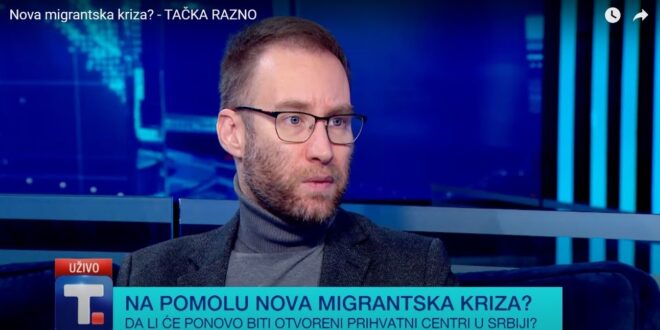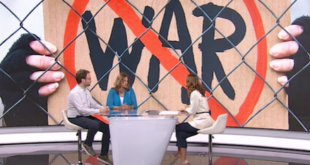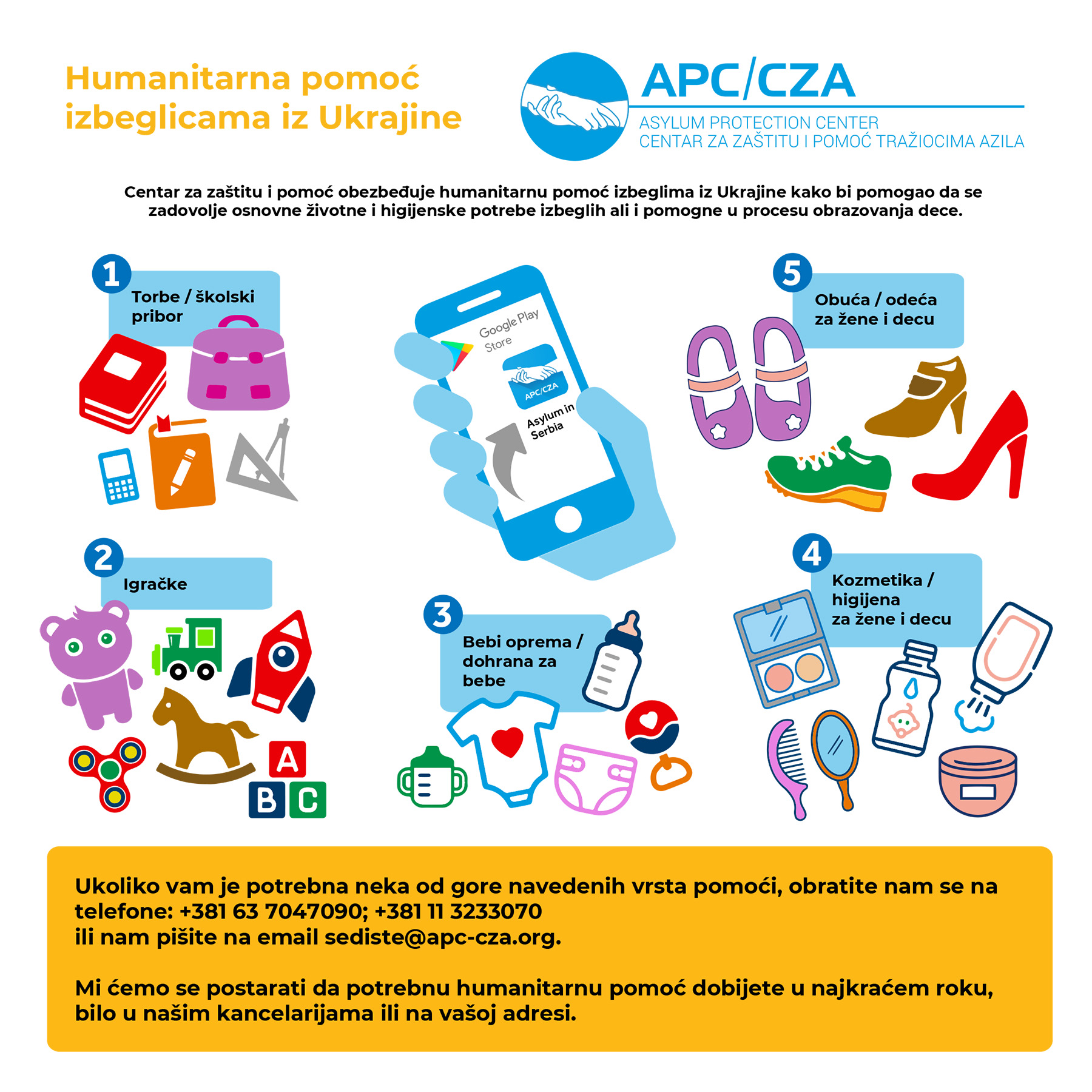Responding to questions about whether a new migrant crisis is on the horizon, what Serbia might expect, and if reception centers will be reopened, Radoš Đurović reflected on the number of people entering the EU via the Balkan route and Serbia. According to estimates from the Asylum Protection Center, over 40,000 people have entered Serbia since the beginning of 2024, which is fewer than the more than 108,000 who passed through Serbia in 2023. Most of this year’s arrivals continued on from Serbia to Bosnia and Herzegovina, though since June, migration has partially redirected toward Hungary and Croatia. Following extensive police actions in Vojvodina during the last quarter of 2023, migration through Serbia toward Croatia, Hungary, and Romania was significantly slowed and nearly halted until May 2024. Despite the intense influx of migrants moving along routes from Turkey and the Western Balkans to the EU over the past two years, the overall numbers of refugees entering the EU as irregular migrants are far smaller than during the 2015 refugee influx and are also fewer than the numbers of Ukrainian refugees since the onset of the war in Ukraine.
Đurović pointed out that the EU and its member states have responded differently to these challenges. For example, although 8.5 million refugees arrived in the EU from Ukraine within just the first two months of the war in 2022, there were no issues regarding their reception or the required solidarity among EU member states. The same cannot be said for the reception of refugees from Asia and Africa since 2015. Đurović emphasized that numerous factors contributed to the successful reception of Ukrainian refugees, notably that when states choose to address problems, they find models and capacities to do so. As entities with the largest resources and capabilities to address macro-level challenges in today’s world, states can tackle complex issues, including migration. Regarding Ukrainian refugees, each EU country was part of a network of reception and solidarity, which yielded results. The motivations behind the EU’s successful response to the unpredictable migration crisis in Ukraine are varied and complex, perhaps even offering insights into how similar migration challenges could be managed in the future. As Đurović noted, the EU effectively welcomed Ukrainian refugees partly because the war was on its borders and because the refugees were Europeans, who were not perceived as integration challenges or political threats by European elites or the broader public. Additionally, the EU saw a potential labor force in the migration of Ukrainian refugees.
With the worsening situation in the Middle East, the war in Palestine and Lebanon, and tensions between Israel and Iran, the number of people at immediate risk to their lives and property is rapidly increasing. Over 440,000 refugees have already fled Lebanon to war-ravaged Syria, with others attempting to reach Jordan or to cross the sea to Turkey and Cyprus. Considering the millions of Syrian refugees already in the region and the still-unstable areas in Iraq and Syria, it can be reasonably expected that further escalation of armed conflict could drive a wave of refugees toward Idlib province, which is under Turkish control, as well as to Turkey itself, which currently hosts over 4.5 million refugees. The scope of such a scenario, and any further movement toward Europe, would largely depend on the response and capacity of Turkey, a crucial player in managing or halting irregular migration across the Eastern Mediterranean toward the EU.
EU Member States Want Legal Labor Migration, But Not Irregular Migration
Đurović explains that, broadly speaking, there are two main pathways of migration to the EU: one is legal labor migration, preferred by bureaucracies and developed Western countries, and the other is so-called irregular migration, which, from the perspective of these countries, poses various risks to security and integration and acts as a dangerous precedent and pull factor for further mass migration toward Europe.
However, according to Đurović, both types of migration ultimately bring similar challenges. Western administrations are interested in labor migrants primarily for economic growth, although both labor migrants and irregular migrants often come from similar or related regions. Đurović emphasizes that both groups come from countries with similar religious, cultural, historical, linguistic, and other characteristics, yet legal labor migration is preferred. The stance of elites is clear: they want to select migrants with specific skills and qualifications, but exclusively through legal means.
On the other hand, unclear messages are sent to the broader public and people in the countries of origin, who are either invited or discouraged from coming to the EU. As Đurović points out, what we see on the ground, something our colleagues in other countries also report, is that refugees often do not understand the distinction between legal and irregular migration or the preferences of developed countries and the EU regarding migration. They don’t see that it’s about profit and economic calculation—some people are allowed entry if they have skills and come legally, while others who are vulnerable and lack the means to enter with a work visa are denied. Refugees, often traveling irregularly, see and hear the call for a new labor force and think, “If we must, we will work even harder in a place that waits for us and invites us to come, because we are also labor.”
This creates a significant challenge for European elites in communicating their need for legal labor to the public and to societies in the developing world, where migrants originate.
The EU’s Accelerated Fortification and New Arrangements with Third Countries
Commenting on the current EU migration policy and existing plans, Đurović stated that the EU is accelerating its fortification through the construction of physical barriers, walls, and other obstacles. At the same time, it is working to curb migration by negotiating lucrative agreements with neighboring third countries along the migration routes to Europe. He noted that the EU is increasingly turning towards comprehensive, multi-sectoral agreements with these countries, which include economic, financial, trade, political, and other arrangements, all centered on combating irregular migration. These agreements are being signed with countries like Tunisia, Morocco, Turkey, and other transit nations, while action plans are being developed based on similar models for the Western Balkans and for countries along major migration routes leading to the EU (such as the Central Mediterranean route). Time will reveal the specific agreements the EU plans to establish with individual Western Balkan countries, and in this regard, statements from the President of the European Commission have underscored that the EU is closely monitoring the implementation of the Albanian-Italian agreement on migrant reception centers. If successful, this model could potentially be replicated across the EU’s external borders, including the Western Balkans and other areas outside the EU.
Another noteworthy development is the unexpected proposal from the European Commission to the EU Council, recommending that member states consider establishing deportation centers (return hubs) outside EU member states but within close proximity to the EU. This indicates a further radicalization of the EU’s policies aimed at curbing irregular migration along its external borders.
Legally Contentious Establishment of Asylum Processing Centers Outside the EU
In response to a question about the potential for future EU agreements resembling the Albanian-Italian arrangement for processing asylum applications outside the destination countries, Đurović highlighted that the judiciary plays a crucial role in asylum issues and in upholding fundamental human rights, which can obstruct agreements such as the Italian-Albanian one. Italian courts, for instance, recently ordered the immediate transfer of migrants back to Italy after they arrived in Albanian ports and the newly established triage centers. A similar situation occurred with the UK-Rwanda agreement, which had stipulated that asylum seekers would be relocated and their applications processed in Rwanda. Such agreements, aimed at outsourcing the responsibility of asylum application processing, are legally contentious from various perspectives, including the right of refugees to seek asylum, the exercise of one country’s jurisdiction within another, guarantees of a fair procedure, the right to a hearing in the destination country, the availability of legal recourse, and access to legal assistance—issues that heavily burden such agreements.
The EU’s Interest in Establishing Deportation Centers Outside Its Borders, Contingent on Bordering Countries’ Willingness
Đurović highlighted that, unlike the Albanian-Italian agreement, which relocates refugees and conducts asylum procedures outside Italy but within Albania, the EU is now advocating for deportation centers to be set up in third countries, outside EU borders. Deportation centers or “return hubs” differ from triage centers like those Italy has established in Albania. According to Đurović, deportation centers are intended for migrants whose asylum applications have been rejected, thus requiring their return to their countries of origin. Recently, the European Commission proposed that the EU Council consider establishing such centers outside the EU. Đurović noted that setting up these deportation centers could occur in the Western Balkans. It appears that some EU member states and the European Commission are inclined to conduct deportations outside the EU, including in the Western Balkans, due to their geographic proximity.
Although the establishment of deportation centers outside the EU is realistic, it ultimately depends on the readiness of third countries to accept such arrangements. While costs are high, such agreements often include financial, economic, and political benefits for participating countries, as seen with Tunisia, Morocco, and Turkey. For many countries, including potentially the Western Balkan states, these agreements could be appealing as they bring benefits and EU partnership status without compromising national security or the welfare of local citizens. Therefore, Đurović stressed that it would not be surprising if the Western Balkans became part of such EU arrangements in the future.
Violence, Fences, Barriers, and Planned Deportations Won’t Solve Migration Issues
Đurović believes that migration flows cannot be halted by violence, fences, return centers, or planned deportations. People in desperate situations will continue risking everything to find safety and start anew in Europe. He argues that migration will persist until there is political resolution and stability in the countries from which migrants and refugees are fleeing. The core issue of irregular migration lies in the suffering of refugees trapped in a hopeless situation, unable to return to their homelands. Without safe places for refugees to return to, halting migration is impossible. These individuals will risk their lives and health to reach a secure haven.
Many Politicians Exploit Migration Issues to Score Political Points
Commenting on the integration of Syrian refugees into German society, Đurović notes that, by various accounts, these individuals have successfully integrated to varying extents, with those remaining in the country contributing significantly to the labor market. The demand for labor in Germany remains high, with even Ukrainian refugees unable to fill the need for 5 million new workers.
According to Đurović, these issues should be viewed through the lens of both economics and politics. In the lead-up to the European elections held earlier this year, many political elites identified migration as a topic of particular importance for voters. While migration topped the list of concerns in some countries, social justice, environmental issues, and the Russia-Ukraine war were primary concerns across Europe. In the political arena, migration often presents a wide-open opportunity for politicking, as migrants lack representatives or a voice in political debates and parliaments.
Exploiting the migration issue is achievable through the dissemination of half-truths, unverified, xenophobic, or sensationalist information. Đurović emphasizes that migration is an extremely complex topic that cannot be resolved in its entirety but can be continuously exploited, which explains why migration is now a central focus for right-wing and centrist political elites in Europe.
With Reception Centers Closed, Migrant Families are Housed in Unsuitable Police Facilities
Commenting on the state of refugee reception centers in Serbia, Đurović highlighted that these centers, particularly those located in critical areas along borders with Bosnia, Bulgaria, Hungary, and Croatia, remain closed. For instance, the reception center in Subotica has been effectively closed since the beginning of 2024 and officially since August 2024. According to Đurović, the Asylum Protection Center (CZA) sees an urgent need to reopen the Subotica center as migrants continually attempt to cross borders with the assistance of smugglers, and when pushed back into Serbia, there is nowhere in Vojvodina for them to stay. CZA data shows that around 200 people try to cross into Hungary daily, but Hungarian authorities push these migrants back to Serbia, where they are then brought before Serbian misdemeanor courts and other institutions.
During these procedures, Subotica police temporarily house migrants, including women and children, in police stations due to the lack of adequate accommodations. Police facilities are particularly unsuitable for housing large families with children, highlighting the urgent need to reopen the Subotica center managed by the Commissariat for Refugees and Migration to provide adequate accommodations for refugees. Đurović emphasized that the responsibility lies with the Commissariat to open this center, enabling other institutions to focus on their respective migration-related tasks without accommodation issues.
The CZA has appealed for these reception centers to remain open, noting that the decision to close or open such centers is not always based on on-the-ground needs or the challenges faced by institutions dealing with these issues. According to Đurović, Serbia’s favorable relations with neighboring EU countries, such as Hungary and Croatia, may also influence how these centers operate near EU external borders.
Frontex Could Aid in Establishing a More Effective Readmission System between Serbia and Neighboring Countries
Responding to questions on what can be expected from Frontex in the upcoming period concerning the Western Balkans, specifically Serbia, Đurović pointed out that Serbia has a new agreement with Frontex granting it executive powers and allowing it to operate along Serbia’s borders with non-EU countries. However, in practice, Frontex’s presence remains tied to the actions and coordination of Serbian police. Frontex operates along the Hungarian border and occasionally on the Bulgarian border, and under the new agreement, its presence is also anticipated along Serbia’s border with North Macedonia.
According to Đurović, the role of Frontex tends to be overestimated. CZA teams do not see Frontex’s presence in Serbia as effectively curbing smuggling, trafficking, or illegal migration. Frontex’s role would be more impactful if it operated in both Serbia and neighboring countries, facilitating a more efficient readmission system. Serbia faces challenges because migrants enter from North Macedonia and Bulgaria without seeking asylum in Serbia. Once they are in Serbia, these migrants cannot be returned, as neighboring countries often do not grant readmission consent, despite existing readmission agreements.
Frontex’s presence could facilitate communication, making it harder for neighboring countries to ignore Serbia’s readmission requests, which would strengthen Serbia’s position in these policies. As Đurović explained, Serbia finds itself in a challenging position: on the northern side, it borders EU countries that are increasingly reinforcing their boundaries with Serbia, while in the south, Serbia has porous borders and lacks consistent cooperation with neighboring states, which also aim to reduce migration pressure on their territories.
 AzilSrbija AzilSrbija
AzilSrbija AzilSrbija





